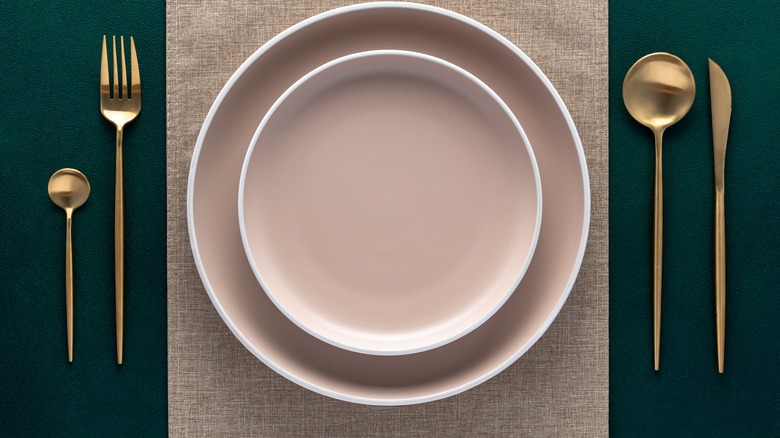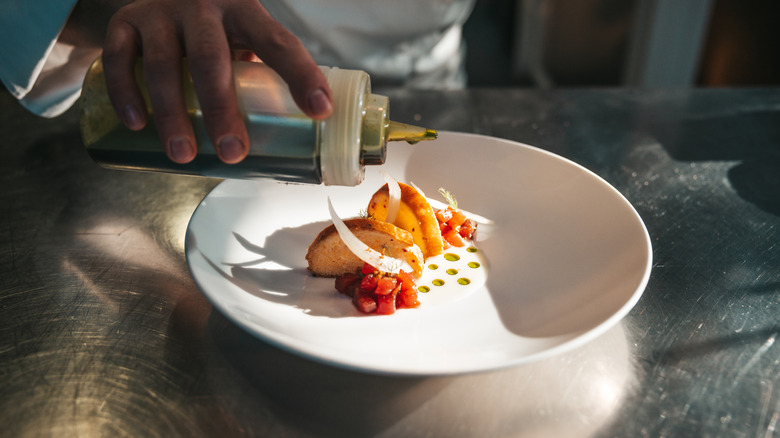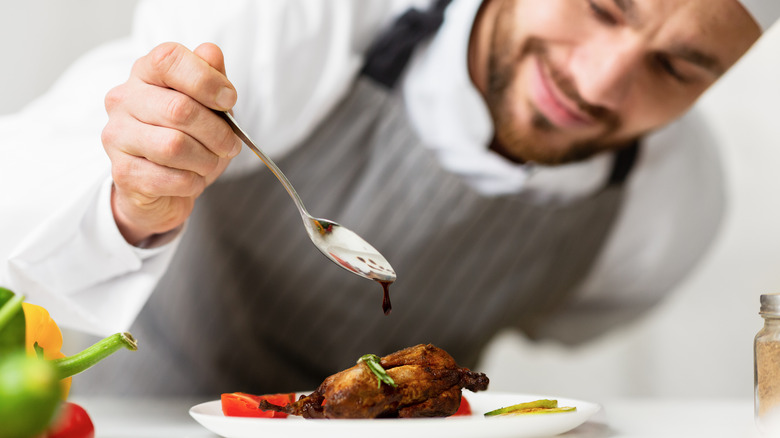The Rule To Follow For Plating Your Fancy Homemade Dinner Like A True Chef
You may have heard the old saying that you eat with your eyes first. If you haven't, what it basically means is that the first thing you'll most likely notice about your meal is how it's presented to you. Even the plating itself, the placement of your food on the plate, is subject to scrutiny.
The idea is to take your main entrée of the evening and put it in the center of your plate, before surrounding it with your side-dishes, building a ring around the main course. For example, if you made filet mignon, roasted potatoes, and asparagus, what you would want to do is place your filet mignon in the center of your plate and then circle the roasted potatoes, asparagus, and whatever other side dishes you have around it. This way, you're drawing special attention to the main course, the "star" so to speak, rather than placing it out of the way on the plate.
But this isn't to say that this is the only method to plating your meal. If need be, you may want to add something a little more colorful to the center than the main course.
Put the most colorful dish in the center of the plate
It's a common trick that advertisers will add a bit of extra color to get people to pay special attention to their product. That same idea, or at least the principle of color, can be applied to how you plate up food.
While the main course is obviously very important and you want people to try it, you'll also want to add a little bit of what is commonly known as the "wow factor." You want to give your dish a spot or two of vibrant, attractive color to make it more aesthetically pleasing to the diner's eye. Let's return to our previous example of a steak dinner. Let's say that, alongside the potatoes and asparagus, you also made roasted tomatoes. These bright red tomatoes would be a nice contrast against the dark browns, golds, and dark greens of the other dishes. You may want to arrange the tomatoes as the "centerpiece," a focal point that will attract the eye to the dish.
But what do you do if you don't have any colorful side-dishes to show off? You can use the first method or you can try thinking a little more "vertical" when it comes to plating.
You could try stacking your foods on the plate
Stacking your food is exactly what it sounds like — stacking portions of your food on top of each other to form a vertical tower. The idea behind this isn't to encourage chefs to use their fine motor skills, but to help build a contrast between different textures, colors, and flavors. The "base" of the tower could be something soft like puree or something hard like vegetable crisps, but aside from the foundation whatever you stack is up to you. It could be a variation of roasted or cooked vegetables or pieces of meat like steak, chicken, or seafood. However you build your tower is totally up to you, so long as it differs in color, texture, and shape to help make it look attractive.
Whether you stack your food, arrange it by color, or put the main course right in the center, you shouldn't drive yourself crazy trying to figure out which is the "right" method. Just the simple act of taking the time to make sure your food looks good and is served in a welcoming manner is a sign of someone who cares about the meal they serve.


